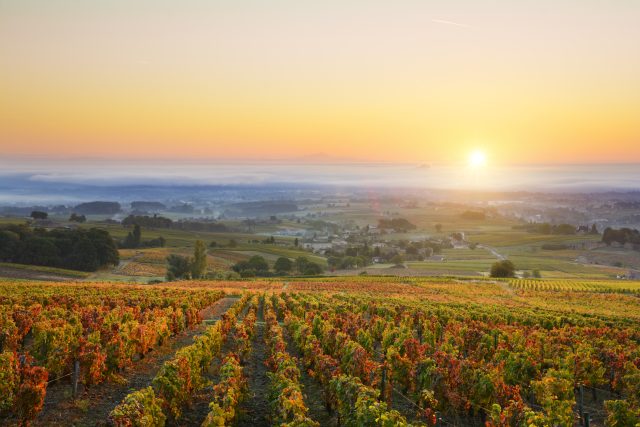This website uses cookies so that we can provide you with the best user experience possible. Cookie information is stored in your browser and performs functions such as recognising you when you return to our website and helping our team to understand which sections of the website you find most interesting and useful.
Top Rhône Valley wine trends to look out for
The Rhône Valley, known for its traditional styles of red wine, is diversifying to rise like a phoenix from the flames after global sales faltered during the Covid-19 pandemic, reports Patricia Stefanowicz MW.

True, the internationally-recognised red wines of the northern Rhône—Côte Rôtie, Hermitage— and the equally stellar wines from the southern Rhône Cru, Châteauneuf-du-Pape, are constantly flying the flag for this glorious region with their auction-status red wines. But there is more to the Rhône Valley than these collectable treasures.
The Rhône has long been passionate about biodiversity.
Growers such as Vincent Boyer, a grower and winemaker in Visan and the vice-president of Inter-Rhône, and Michel Chapoutier with vineyards throughout the Rhône, are convinced about mixed plantings, and not only of different grape varieties.
All sorts of trees and shrubs, olives, almonds, herbs, and wildflowers abound in the vineyard. The diversity of the terroir attracts roaming animals, bees distributing pollen and birds roosting in low planted shrubs, keeping most of those species away from the ripening grapes. So, what does this mean for the wines?
The region’s very successful international strap-line, ‘Think Red, Think Côtes-du-Rhône’, is valid, because even a decade ago around 85% of the wines were red.
The relatively simple, very affordable Côtes-du-Rhône reds form the base of a pyramid. Easy-drinking and consumer-friendly, these light red wines work well with fish-and-chips and mushy peas, or a ploughman’s lunch.
Côtes-du-Rhône Villages red wines, usually with a bit of old oak ageing, are a significant step up. Often the latter wines have a specific Village name appended and are nearly up to the level of a southern Rhône Cru. Names to look for are Visan or Laudun. All are incredibly reliable and match well with a variety of foods.
Almost unknown Crus from the southern Rhône are also worthy of exploration. Of particular interest are Gigondas, which is a younger sibling of Châteauneuf-du-Pape, Vacqueyras, a little lighter in style, and Lirac.
A recent trend is for lighter-bodied reds, harvested a little earlier and produced with less tannin extraction, these are crowd-pleasing wines with around 12-13% alcohol. Boyer believes that different grape varieties can be used to keep alcohol levels lower, so he grows Counoise and Cinsault, as well as Grenache and Syrah.
The Rhône wine region is changing.
Inter-Rhône, the promotional body for the entire region, has set targets for increasing the diversity of the Rhône wine offering, and there is increasing emphasis on white and rosé wines.
Nowadays only 76% of the wines from the Rhône are red, with 11% white and 13% rosé, both of which latter categories are growing.
According to Ann Vermeesch owner/winemaker at Le Plan-Vermeesch, a grower and négociant based in Suze-la-Rousse, innovation and diversity are crucial for the region. Inter-Rhône are actively promoting a range of styles, including sparklings and ‘orange wines.’
White wines have become relevant, too. Once only recognised for Viognier from Condrieu and the minuscule Château-Grillet, the Rhône is now producing fresh, fruity mid-weight whites from lesser-known grapes Roussane and Marsanne, Grenache Blanc, Rolle, Bourbelenc and Clairette.
Rosés, albeit with the heritage of deep-hued Tavel, are also evolving. Lighter styles these days, the wines are made with less extraction. Showing fresh raspberry, strawberry and cranberry fruit, and a significantly paler colour to meet customer expectations, these wines are crisp, clean and delightful.
What the Rhône displays today is evolution, diversity and excitement. Consumers should take note.
Related news
A 'challenging yet surprising' vintage for Centre-Loire in 2024

